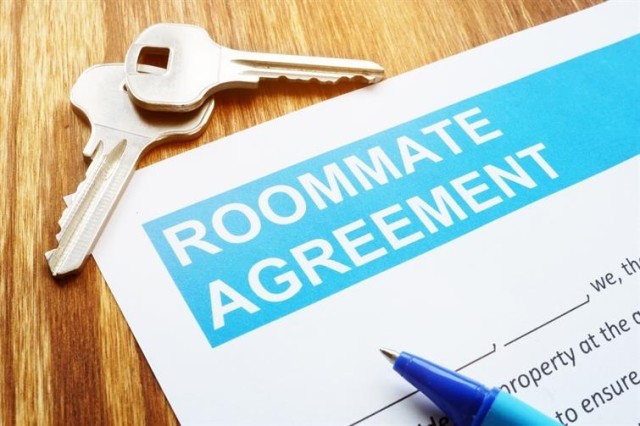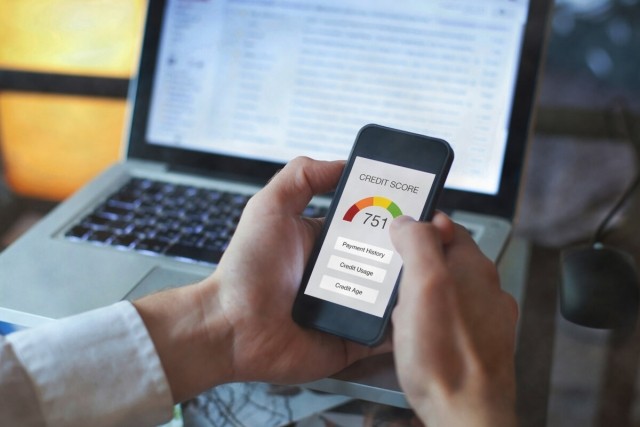They’re small and fit into the palm of your hand yet have the power to unlock something grand. As a renter, receiving your apartment keys from a property manager or landlord on moving day is a pretty great feeling to experience.
The keys to your new home not only open the front door, but also hold accessibility to some sweet amenities as well. Get familiar with the keys to your apartment stat – and try really hard not to lose them in the process either. Ready to learn all about your apartment keys? Let’s get to it.
Types of Apartment Keys
There are a variety of apartment keys and lock systems that communities can install on their property nowadays. When you rent an apartment, you may need key access to enter other areas around the community, such as the swimming pool, mail room, and elevators. Let’s begin our key discussion by identifying the types of apartment keys you may encounter on your apartment tours:
Key Fob.
You may find communities issuing key fobs to their residents instead of traditional metal ones. Apartment key fobs are convenient and small, fitting well on a key ring. Each key fob has a built-in identification code that’s unique to each renter. Only authorized persons (tenants in this case) will have entry once the key fob has been successfully read by the key reader.
- Typical uses: front doors, amenity access, parking garage, gate access, mail room, and elevators.
Keyless Entry.
Apartments with a keyless entry system allow residents to lock and unlock their home from a mobile phone or keypad. These smart-locking devices are usually found in more modernized apartment communities.
- Typical uses: front doors, mail room, and amenity access.
Key Card.
Key cards are wallet-sized plastic access cards that allow you to tap and go into residential areas. A key card contains a unique magnetic code that unlocks the lock mechanism. Renters will usually keep these keys in their wallet, purse, or in their car.
- Typical uses: building or lobby entry, gate access, parking garage, mail room, and amenity access.
Metal Key.
The metal key is the original key – and still very commonly used in apartments. The key’s shaft is designed with distinctive cuts and grooves that only open a lock with a matching mechanism design.
- Typical uses: front doors and mailboxes.
The Advantages of Smart Apartment Keys
- Keys have custom codes so no two renters have the same one.
- Keys can be quickly deactivated if lost, stolen, or damaged.
- Keys are convenient and quickly programmable.
If Your Keys Are Ever Lost, Stolen, or Damaged
If you discover that the keys to your apartment (pool, mail room, whatever) are lost, stolen, or damaged, you don’t need to panic. First, notify your landlord immediately. He or she should be able to grab you a spare in the meantime and work to get your lock changed and keys updated.
Keys that are engraved with “Do Not Replicate” should not be copied. If you make a copy of your new set that has these words, it could be a violation of your lease agreement. Maybe you lost a mailbox key? Instead of prying open the mailbox door (don’t, it’s illegal!), talk with your landlord about getting a replacement. If they can’t get you a new one, you’ll have to go to your local post office for a new mailbox key.
If you had a key lost, stolen, or damaged, you might have to pay to replace it per your lease. The price of a replacement key can vary by community, costing a renter on average between $100 and $400. Look over your lease agreement for the actual amount you might owe for a replacement apartment key.
Metal keys may have a cost associated with them if the landlord has to call a locksmith. Otherwise, maintenance can probably change the lock for you quickly. If you need to be let into your apartment after leasing office business hours, make sure you’re fully aware of the community’s Lockout Policy. You could be charged a fee for making someone come and let you in when the leasing office is closed, on top of the amount you could be required to fork over for a new lock and keys.
Landlords Can Have Keys to Apartments
Landlords may have a master key for the property, which could include access into individual apartments. They can use the key as outlined in the lease agreement. Situations where they might need access inside your place include emergencies, inspections, and fulfilling maintenance requests with proper notice given.
Key Guidelines for Every Renter
When you finally get your keys, the community rules surrounding your apartment keys are outlined in your lease agreement. Though, here are some key dos and don’ts to consider following:
The Dos:
- Make a Copy If You Can. Check your lease to make sure you’re allowed to copy your key. Having a spare will help if you ever lose the original. If the key says, “Do Not Replicate,” then don’t copy it.
- Return All of The Keys. Return every one of your apartment keys to the property manager or landlord on move-out day. These include everything from your apartment key fob to your gate access key card and your mailbox key.
The Don’ts:
- Don’t Hand Out Extras to Just Anyone. Select just one or two trusted family members or friends to hold onto your spare keys. Make sure it’s someone who lives fairly close by, so they can easily swing by to let you in.
- Don’t Hide Your Key in Broad Daylight. While it sounds convenient to place your spare key under the door mat or inside one of those hide-a-key rocks, it’s not the soundest decision. I mean, anyone could have access to it.
- Don’t Turn in Keys Early. Don’t turn in your apartment keys until the last day of the lease if you can. You may need to return to the property at some point, which means you’ll need access to it.
- Don’t Turn in Keys Late. You could lose a portion of your security deposit if you turn in your keys late. You want as much money back as possible, so turn in those keys on time!
If you follow the key guidelines above, you’ll be in a better position to receive your security deposit at move out. Getting handed the keys to your apartment is exciting, with so many potential amenities to unlock. Best of luck on your apartment search!






